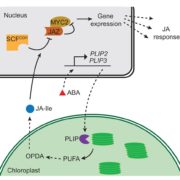
The Lipase Link: Abscisic Acid Induces PLASTID LIPASES, Which Produce Jasmonic Acid Precursors
Blog, Research, The Plant Cell, The Plant Cell: In BriefCrosstalk, crosstalk— it’s a word that keeps coming up. Indeed, and perhaps not surprisingly, plant hormone signaling pathways all seem to affect each other to some extent. For example, the MYC2 transcription factor plays roles in abscisic acid (ABA) and jasmonic acid (JA) signaling in the response…

Divide and Conquer: High-Throughput Screening of Chlamydomonas Cell Cycle Mutants
Blog, The Plant Cell, The Plant Cell: In BriefCell division is essential for growth and reproduction. The cell cycle machinery is well conserved between yeast and animals, but whether this conservation extends to the plant lineage is not clear, having diverged over two billion years ago: ample time and opportunity for divergence in sequence and…
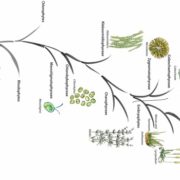
A New Polysaccharide with a Long Evolutionary History
Blog, Research, The Plant Cell, The Plant Cell: In BriefBy Peter Ulvskov and Jesper Harholt
For the first time in a very long time, a new polysaccharide is reported in plants. Roberts et al. (2018) discovered an arabinoglucan in the moss Physcomitrella patens. This discovery came about not as a result of biochemical characterization of the moss cell…
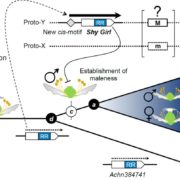
Open Access Shy Girl Gives Kiwifruit Male Flowers
Blog, Research, The Plant Cell, The Plant Cell: In BriefFrom the human perspective, separate sexes are the norm while hermaphroditism is an exotic concept. For plants, hermaphroditism is the norm. Dioecy, separate male and female individuals, is rare and dispersed in the angiosperm phylogeny (Käfer et al 2017, Renner 2014). In fact, dioecy is rare enough…
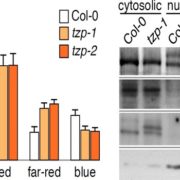
Developmental Timing is Everything: TZP and Phytochrome Signaling
Blog, The Plant Cell, The Plant Cell: In BriefAlthough they lack eyes, plants can differentiate between colors with a full complement of photoreceptors. Phytochromes (phys) are such photoreceptors dedicated to the visible light spectrum ranging from red light (600-700 nm) to far-red light (700-750 nm). phys are some of the most studied genes and…
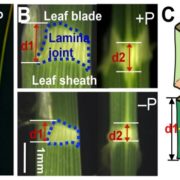
So Inclined: Phosphate Status and Leaf Angle in Rice
Blog, The Plant Cell, The Plant Cell: In BriefWhen plants have plenty of room, they can maximize the incoming light by spreading their leaves. However, in modern agricultural fields, plants that hold their leaves upright to decrease mutual shading can be grown at high density. Leaves serve as a reservoir for nitrogen that can be re-mobilized to…
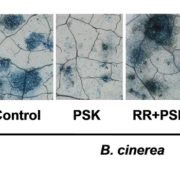
Pentapeptide Protection of Botrytis-Infected Tomato by Phytosulfokine
Blog, The Plant Cell, The Plant Cell: In BriefFungal pathogens such as Botrytis cinerea can cause devastating losses to agricultural crops – ask any strawberry, grape, or tomato grower. To prevent these losses, plants can summon a variety of immune responses by recognizing specific molecules associated with pathogen attack and/or internal damage.…

Fresh as an Exitron: A Flower-specific Splice Variant of AUXIN RESPONSE FACTOR8 Helps Shape the Stamen
Research Blog, The Plant Cell, The Plant Cell: In BriefEukaryotic genes contain protein-coding exons interspersed with non-coding introns. While introns are usually spliced out of mRNA (often in conjunction with various exons), intron retention usually causes mRNA to remain in the nucleus instead of being exported to the cytoplasm for translation. This process…
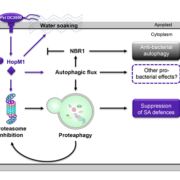
Autophagy: Both Friend and Foe in Pseudomonas Infection
Blog, The Plant Cell, The Plant Cell: In BriefEukaryotes use two major systems for getting rid of unwanted proteins: the ubiquitin proteasome system and autophagy. The proteasome degrades ubiquitinated proteins. Autophagosomal vesicles encapsulate cellular waste and either deliver it to the vacuole or fuse with a lysosome. Animal cells use autophagy…

